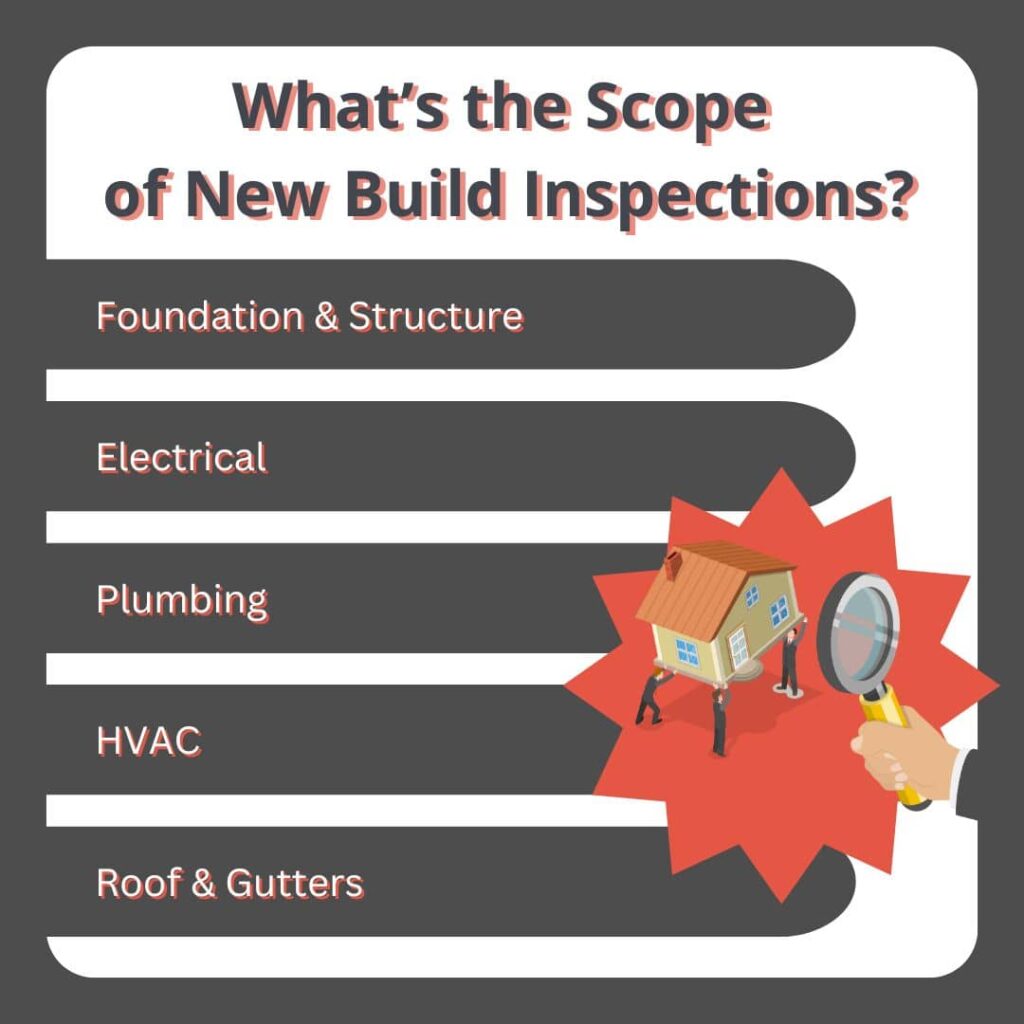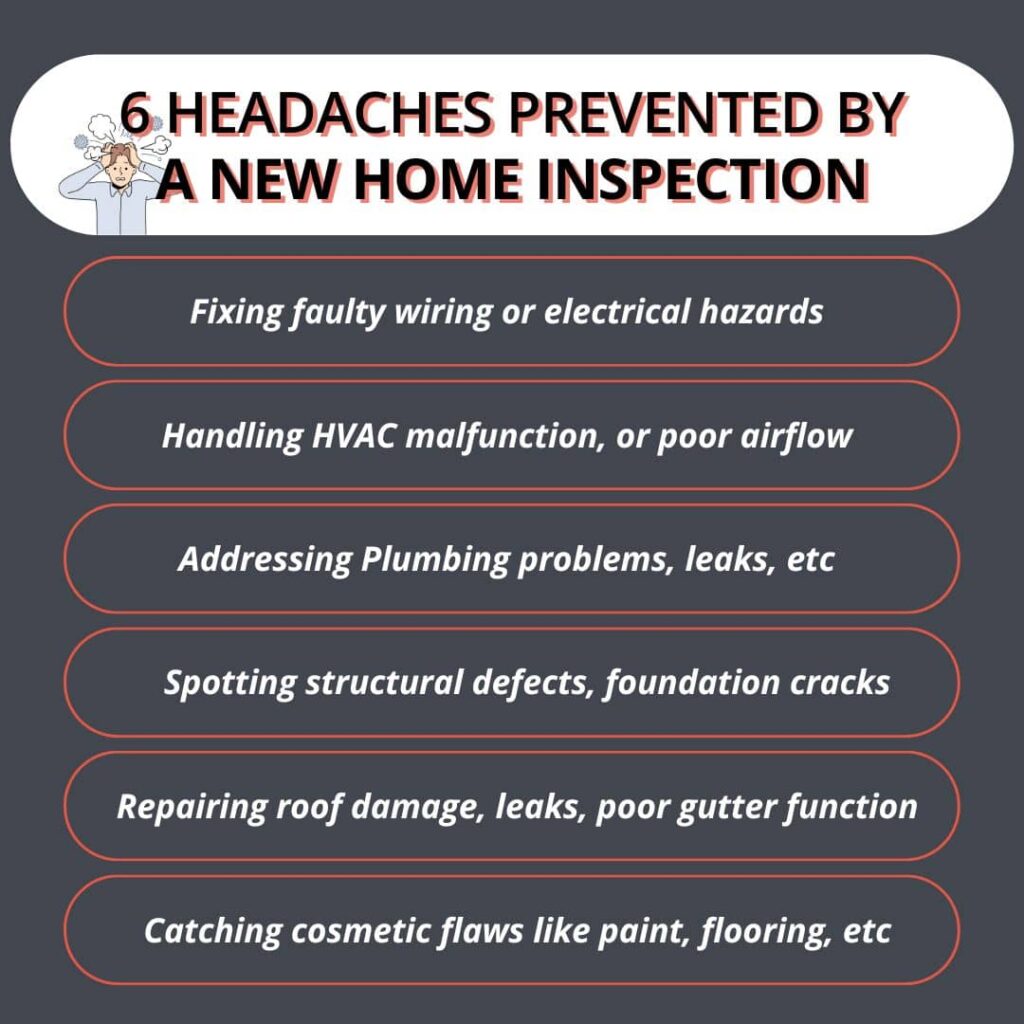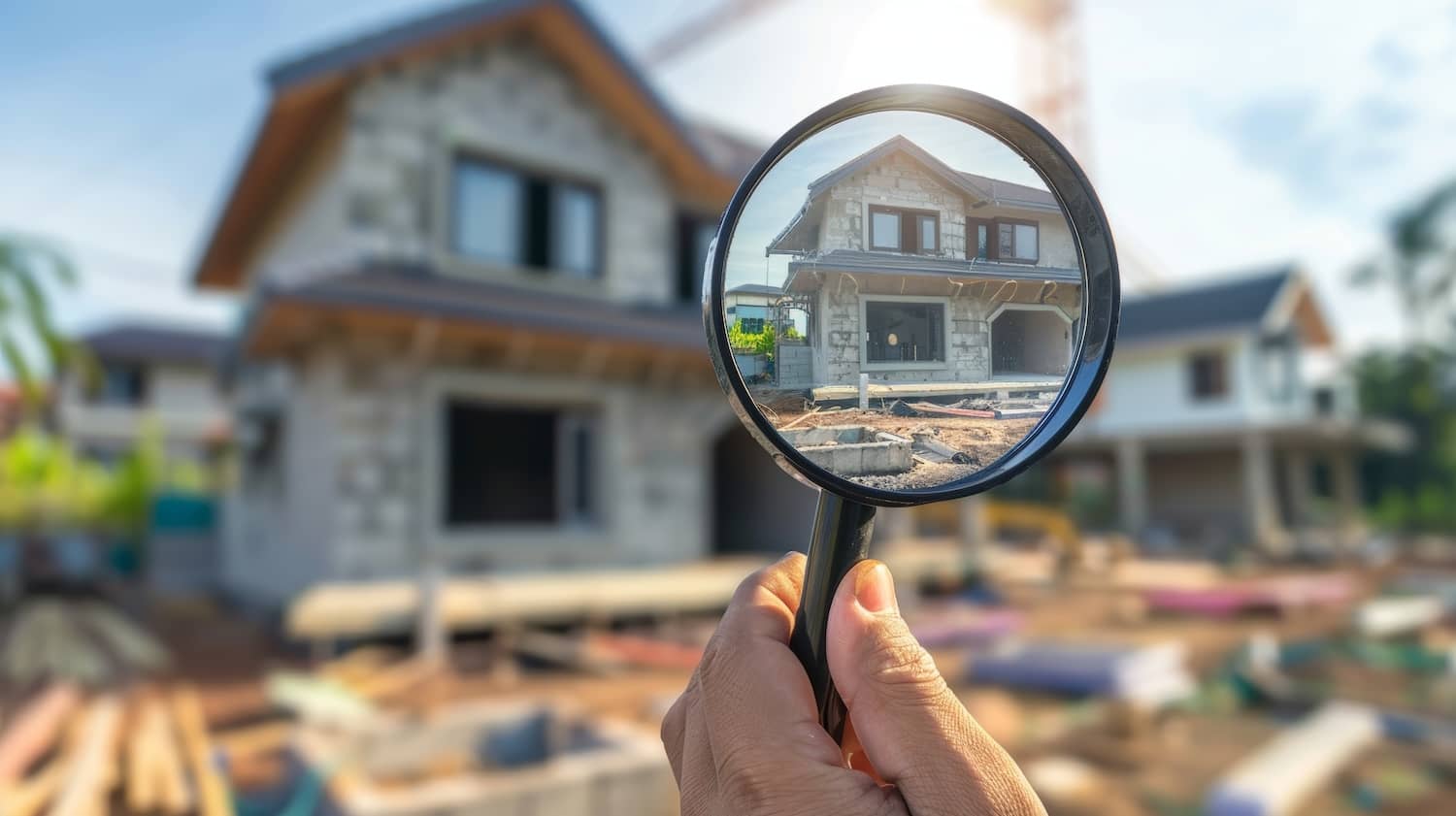You’ve invested in a newly built home, expecting everything to be flawless—but the fact of the matter is that even the newest homes can come with hidden issues. That’s why inspections are still so important for new build homes.
The assessment goes beyond the surface to discover flaws that could lead to future headaches, from electrical mishaps to plumbing problems. This post will highlight six problems that new construction inspections spot early that make them worthwhile.
Table of Contents
ToggleWhat Do Inspections Cover for New Build Homes?
During an inspection for new construction, all the major systems and structural elements of the home, from the foundation to the roof, will be assessed.
Inspectors look for issues in electrical systems, plumbing, HVAC, and the overall structural integrity. They also assess things like roofing, insulation, and finishes. Even though these homes are brand new, construction errors and overlooked details can cause problems later on.
The objective it to catch these issues early, before they turn into costly repairs.
1) Electrical Problems
Even in new homes, electrical systems aren’t always flawless. Construction crews might rush installations, or minor details may be overlooked, leading to hidden electrical issues that can create major risks if left unchecked. This would mean problems like:
- Exposed wiring
- Overloaded circuits
- Insufficient or misplaced outlets
Electrical problems are not just inconvenient—they can be downright dangerous. Exposed wiring or faulty installations can lead to fire hazards, power surges, and even electrical shocks.
Overloaded circuits can cause power outages or tripped breakers, leaving parts of your home without electricity.
Finally, insufficient outlets can force you to rely on extension cords, increasing the risk of overheating and fires.

2) HVAC Installation Issues
Heating and cooling systems in new build homes can also suffer from improper installation or poor design. Even a brand-new HVAC system can experience problems if it hasn’t been installed or set up correctly, leading to inefficiencies or even breakdowns early on, such as:
- Poor airflow due to poorly placed vents
- Incorrectly sized ductwork
- Inadequate insulation around the system
An improperly installed HVAC system can cause uneven heating or cooling throughout your home, leading to higher energy bills and uncomfortable living conditions.
In some cases, the system may struggle to maintain the right temperature, working harder than necessary and wearing out sooner. With all this in mind, a new build inspection checks that your HVAC system is working efficiently and set up correctly.
3) Plumbing Problems
Plumbing systems are another area where new build homes can fall short. It’s not uncommon for plumbing installations to have minor flaws that lead to bigger issues over time, especially if these problems aren’t caught early.
- Leaky connections
- Poor water pressure
- Improperly installed fixtures or drains
Even small leaks can cause significant damage if left unaddressed. Water damage can lead to mold growth, rot, and structural problems in your home.
Low water pressure or improper drainage can also affect your day-to-day life and create ongoing maintenance headaches.
4) Structural Defects and Foundation Concerns
Structural integrity is critical to the long-term safety and stability of your home. Even in new builds, errors in construction or rushed timelines can lead to defects that compromise the foundation or framing. Watch out for:
- Cracks in the foundation
- Uneven floors or misaligned doors and windows
- Poorly constructed framing
Structural defects can quickly escalate into major, expensive repairs. Foundation cracks can worsen over time, leading to shifting or sinking, while poorly aligned doors and windows can signal deeper structural issues.
5) Roofing and Gutter Issues
Even though new build homes have new roofs, problems can still arise during inspections. Improperly installed shingles, flashing, or gutters can lead to serious water damage if not corrected quickly. Here are a few red flags:
- Loose or missing shingles
- Improper flashing around vents or chimneys
- Poorly installed or misaligned gutters
Roof and gutter issues can lead to leaks, water damage, and even mold growth if water is not properly directed away from your home.
An inspection for new structures ensures the roof is correctly installed and your gutters are doing their job, protecting the home from water damage in the future.
6) Cosmetic and Finishing Flaws
While they may seem minor, cosmetic issues in a new build can be frustrating and expensive to fix if not addressed early.
Small imperfections can detract from the quality and appearance of your home, and in some cases, they might hint at larger issues.
- Uneven drywall or paint
- Poorly installed flooring
- Misaligned cabinets or doors
Cosmetic issues may not affect the structural integrity of your home, but they can still impact your satisfaction with the finished product.

Maintenance Tips for New Build Homes
After your new build inspection, maintaining your home is essential for long-term protection and performance. Take these tips with you to keep your new home in top shape:
- Schedule regular servicing to keep your system running efficiently and prevent unexpected breakdowns.
- Even a new roof should be checked annually to catch any early signs of wear or damage.
- Keep an eye out for any leaks or water pressure changes and have them addressed immediately to prevent water damage.
When to Call a Professional
If you’ve noticed an issue—like persistent leaks, electrical malfunctions, or foundation cracks—that keeps coming back despite your best efforts, it’s time to bring in a professional. Beyond that, find an expert if:
- Your builder’s warranty expires: It’s critical to have a professional inspection done before the builder’s warranty runs out. This way, any issues discovered can be addressed at no cost to you, while the builder is still responsible.
- You plan home changes or renovations: Planning to install a new HVAC system, roof, or make significant modifications? It’s best to call in professionals to assess the impact on your home’s systems and structure to ensure everything is done safely and to current building practices.
- You spot signs of structural issues: If you see cracks in your foundation, uneven floors, or sticking doors and windows, you should immediately call a professional to evaluate the situation and prevent more serious structural damage.
Final Thoughts
A new build home might look perfect on the surface, but hidden issues can lead to major headaches if left unchecked. With a professional inspection of your new build, you can catch these problems early.
If you’re ready to safeguard your new home from unexpected surprises, Tier 1 Pro Inspections is here to help in Central Florida. Our expert inspectors will thoroughly assess your property, ensuring that every detail is up to standard. Contact us today to schedule your new build home inspection and enjoy your new home with confidence.

